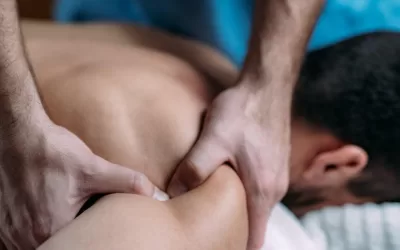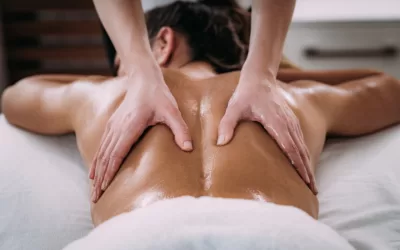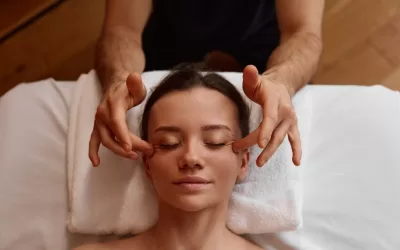If you are like most people, you probably don’t enjoy going to the doctor. In fact, according to a study by The National Institute of Health, 40 percent of adults say they avoid going to the doctor even when they’re sick! The good news is that there is a technique that can help you heal muscle and joint pain without having to go see a doctor. Active Release Technique (ART) is a relatively new method for treating pain and tension in the body.
This article will serve as a beginner’s guide to Active Release Technique, explaining what it is, how it works, and some of its benefits.
What is Active Release Technique (ART)?
Therapists use a variety of manual approaches to assist their patients to heal as rapidly as possible. The Active Release Method (ART) is a proprietary manual treatment technique for releasing soft tissue limitations that cause discomfort and limited motion.
The practitioner applies a deep tissue technique known as Active Release Technique (ART) to examine and treat many soft tissue issues. Repetitive usage injuries, tendonitis, carpal tunnel syndrome, plantar fasciitis, rotator cuff injury, restricted joint motion, and sprains/strains are all examples of diagnoses that respond well to Active Release Technique (ART). Typically, patients will see dramatic improvements in a few visits.
How Active Release Technique works
The therapist will first assess your condition and determine which muscles need treatment. Adhesions, which are dense clusters of scar tissue that develop when muscles and connective tissues are injured, can be effectively treated with the Active Release Technique. The adhesions restrict mobility, causing muscle and joint discomfort.
- Gets to the root of the problem
- Quick, easy, and painless treatment
- Restores mobility and function
- Proven track record
Adhesions can entrap nerves as well, and they may even interfere with nerves being able to communicate properly. The gentle tissues are stretched through Active Release Technique (ART) to break up adhesions so that your muscles, joints, and nerves can move freely.
- Eliminate nerve irritation and pain
- Break up adhesions to end muscle-joint dysfunction
- Restore your quality of life with gentle treatment
- Get back the freedom you need to move freely
Your healthcare professional will feel the area and determine the scar tissue’s location during an Active Release Technique (ART) session. They’ll isolate and target the spot using the procedure, manipulating it to break up scar tissue and restore healthy blood flow so the area can recover.
The Benefits of Active Release Technique
Increases mobility
Adhesions are the most serious impediment to muscle and tendon extension. Breaking up adhesions and limiting their formation improves the muscle and tendon’s flexibility. Active individuals at greater risk of sustaining an injury may benefit from a single Active Release Technique (ART) treatment.
Strengthens range of motion
Active Release Technique (ART) therapies may help those who have suffered a musculoskeletal injury by improving range of motion and mobility. neck pain is estimated to affect about 70% of adults at some point in their lives. Active Release Technique (ART) treatment can help relieve chronic neck pains caused by exercise, sports, or work-related injuries.
Back Pain Relief
Back pain affects approximately 80% of the human population at some time in their lives. Back discomfort is a medical problem that can affect everyone of any age. It was also discovered that around 20% of individuals who have acute back discomfort might later develop chronic back agony. Low back pain is triggered by abnormal activation and adhesions in the upper legs. Active Release Technique (ART) may break down scar tissue and release nerves that are squeezed, providing more than 90% pain alleviation.
It relieves carpal tunnel syndrome
Carpal tunnel syndrome is an illness characterized by numbness, tingling, and pain in the hand or arm. The median nerve is compressed when it passes through a narrow canal. Carpal tunnel release therapy that is specifically designed to treat carpal tunnel syndrome at least three times per week can significantly alleviate its symptoms. This happens as a result of releasing the compression on the median nerve that is causing it to feel numb and tingly.
Strengthens and speeds up muscle recovery
Muscles become worn and torn with daily use. It’s critical for these muscles to recover as soon as possible after this continual wear and strain. Active Release Technique (ART) appears to be the best option for faster muscle recovery. This helps athletes perform better by allowing them to heal more quickly. Muscle healing is aided by Active Release Technique (ART), which restores normal muscular and connective tissue function. This helps your body stay flexible by reducing fibrous tissue build-up and maintaining range of motion.
- increased flexibility
- increased range of motion
- decreased lower back pain
- improved chronic neck pain
- relief of tension headaches
- management of carpal tunnel
- management of shin splints
- management of plantar fasciitis
- management of tennis elbow
- improvement of sciatic symptoms
What body parts are being treated?
The Active Release Technique can be used to relieve pain and other symptoms caused by injury or damage to the following areas:
- Fascia. This is the fibrous connective tissue that surrounds and supports muscles, bones, and other organs in your body. Inflammation in a band of fascia tissue can cause severe discomfort and stiffness. Plantar fasciitis is a frequent fascia tissue injury.
- Tendons and ligaments. Tendons connect muscles to bone, and ligaments connect bones together. A strain or pull on either may cause swelling in the affected area, as well as a restriction of motion.
- Major muscle groups. Any of your major muscle groups may be affected by strains and tears from overuse or injury. Muscles in your neck and shoulders, back, and hamstrings are among them.
Is Active Release Technique safe?
Yes, the Active Release Technique is a safe and effective treatment for chronic pain and other musculoskeletal conditions. It’s been used by therapists for over 25 years, and there have been no reports of serious side effects.
How soon will I see improvements?
In most situations, following the first treatment, a patient will notice an improvement. This might be an improved range of motion, less pain, greater muscle strength, or a reduction in numbness and tingling.
The Key Idea
Advanced Active Release Technique is a non-invasive therapeutic technique that has shown to be very successful in treating a variety of soft tissue problems and injuries, such as overuse and sports injuries. It can aid in the relief of pain and stiffness while also assisting with movement rehabilitation.
Are You an Athlete Experiencing Pain But Don’t Know Where to Turn for Help?
Beyond Ergonomics gives athletes and desk professionals answers to their pain problems. Body imbalances, repetitive use, and lack of movement are the cause of many injuries and pain. Beyond Ergonomics helps you discover your imbalances and create change. MedicinEvolution’s purpose is to reduce pain and other symptoms that you haven’t had luck with. MedicinEvolution Bodywork Beyond Massage is the solution for many problems plaguing your body. Make your appointment today!





